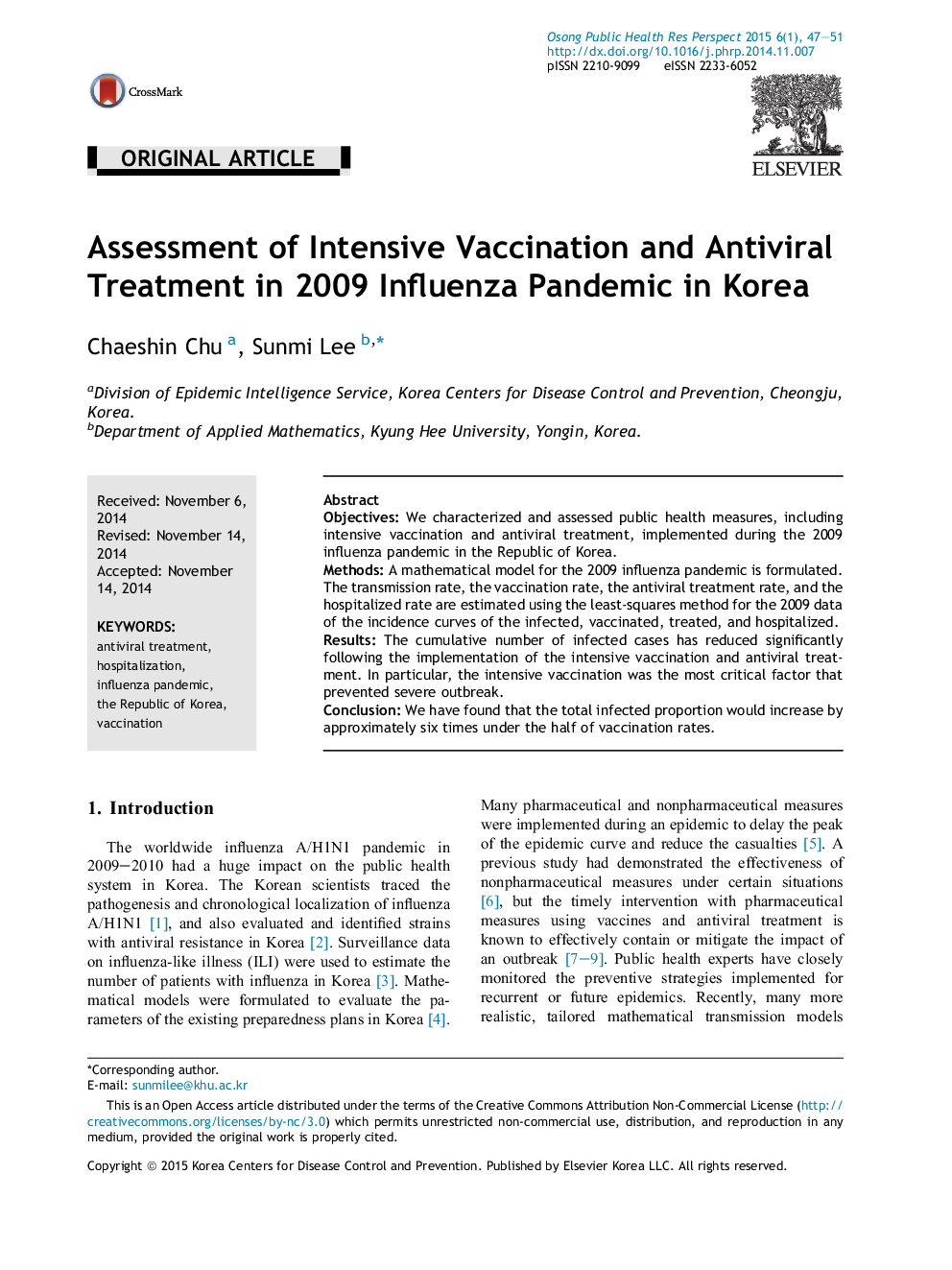| Article ID | Journal | Published Year | Pages | File Type |
|---|---|---|---|---|
| 4201955 | Osong Public Health and Research Perspectives | 2015 | 5 Pages |
ObjectivesWe characterized and assessed public health measures, including intensive vaccination and antiviral treatment, implemented during the 2009 influenza pandemic in the Republic of Korea.MethodsA mathematical model for the 2009 influenza pandemic is formulated. The transmission rate, the vaccination rate, the antiviral treatment rate, and the hospitalized rate are estimated using the least-squares method for the 2009 data of the incidence curves of the infected, vaccinated, treated, and hospitalized.ResultsThe cumulative number of infected cases has reduced significantly following the implementation of the intensive vaccination and antiviral treatment. In particular, the intensive vaccination was the most critical factor that prevented severe outbreak.ConclusionWe have found that the total infected proportion would increase by approximately six times under the half of vaccination rates.
